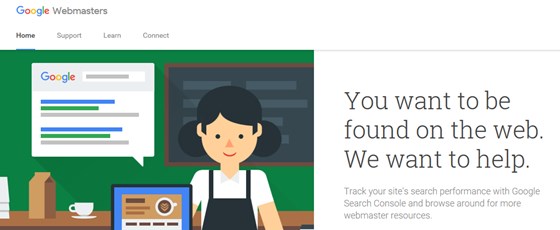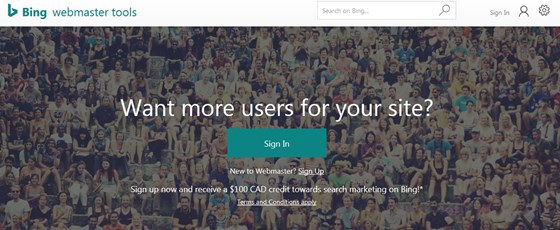It's probably pointless to emphasize the importance of SEO when running a successful website, marketing campaign, or establishing a brand. It takes a lot of hard work to implement it, so one would think it would be OK to sit back once it's done and relax.
But that's not the way the internet works. You have no way of knowing if your SEO strategy is going to be successful. Unless you decide to do an SEO audit.

Check out our list of things you need to do in order to perform a successful SEO audit of your website.
Google Analytics
In order to see if your SEO efforts are producing results, use Google Analytics . Google Analytics can tell you the number of visitors, their location, devices they are using to access your website, as well as the most popular pages on your site.

This means you can use the data to drive them to your website's landing pages. You can easily implement it on your website, and even download reports. Plus, it's completely free.
Google Search Console
While Google Analytics is useful for monitoring visitor behavior, it won't tell you much in terms of your website's interaction with search engine spiders. For that, you are going to need Google Search Console .

With it, you can determine which content will be crawled and indexed by search engines, get rid of malware and spam, discover inbound links, keywords which have led to your website being found, and estimate mobile friendliness, among other things.
Bing Webmaster Tools
Google is not the only search engine to have brilliant webmaster tools, thought.

Bing Webmaster Tools can also help you out with your SEO audit. You can take advantage of detailed reports on how to better optimize your website, identify all of your competitors' backlinks, research keywords, and even reject links to sites you don't find suitable.
XML Sitemaps
Sitemaps come in handy when indexing content, which makes its identification by search engines much easier. XML sitemaps also help mark your website as the original source of the content.
Because Google has a strict policy on duplicate content, not having an XML sitemap means that your website will not be identified as the original source, and can result in your content being removed.
See Also: What are Sitemaps and How to Create an XML Sitemap File
Robots.txt
Robots.txt file is used to tell bots, or spiders, which pages on your website to crawl. You may not want to include all of the pages right away because some of them may be duplicate, some may contain private content, and some might need to appear after a visitor has taken a particular action.
See Also: What is Robots.txt File, Creating and Using Robots.txt
SSL Certificate
Having a secure socket layer, or SSL certificate, means that the data exchanged between your website and your visitors will be encrypted, which contributes to greater safety. Its existence is usually indicated in the URL as "https".
While you can wait to get one for free, buying it costs around $16 per year. It's s small price to pay if you want to keep visitors which are worried about their security online.
Social Media Branding
Branding is everything these days, which is why you should establish your business' image on all available social networks, regardless of your intention to start a social media marketing campaign.
It simply means that you are in control of the image your brand puts out into the world. And it's really easy. All you have to do is claim the name, unless someone hasn't already done it, so there is no excuse.
Meta Data
Content is still king, but you aren't going to benefit from having brilliant content unless it's optimized in a way bots can see it. Only then can your visitors find your way to it, as well.
You can improve upon this by including meta data on your website's pages. To view meta data, right-click on the page, and click "View page source".
See Also: What are Meta Tags - MetaTags in HTML
Title Tag
Aside from having the right meta data, you also need to present in a particular sequence, so that your SEO has a maximum impact. This means you should put the <title> tags first, then <description>, and in the end, <keywords>.
It doesn't matter if there are additional tags between them, as long as the aforementioned sequence is followed.
Tool: Meta Tags Generator, Meta Tag Creator
Character Count
Search engines reduce the number of characters they crawl, and which the readers are able to see in their search engine results.
For most search engines, it's between 55 and 65 characters for the title tags, and about 156 characters for description tags.
This means you only have so much space to intrigue potential visitors and get them to check out your website.
Keywords
Even though Google doesn't index keyword tags anymore, it certainly won't hurt you to include as many relevant keywords in the tags as you can.
But, what you can also do is include some keywords into your URL, title, first and last paragraph, and one subheading.
Content Length and Type
It is entirely up to you to make your content as long or as short as possible, but if you want to create it with SEO in mind, your articles should be at least 700 words long, which should give you enough room to provide value, and to allow bots to crawl your content.
Also, make your content diverse by including images, infographics, and videos, in order to improve your website's ranking.
LSI Keywords
LSI (Latent Semantic Indexing) keywords pertain to words which are related to your main keywords, and which should be included in your articles for improved ranking.
They are not the same as your main keywords, though. There are plenty of tools online that can help you identify LSI keywords.
Segregated Code
These days, most websites are created using different languages, like HTML, CSS, PHP, and JavaScript.
This also means that all of the files written in different languages should be separated, so that it's easier for spiders to index content.
Website Performance
In addition to all of the items above, your website needs to load fast and work perfectly, because it's also one of the things that can affect its ranking with the search engines.
Some of the performance aspects you need to take into account are loading speed, 301 redirects, 404 errors, broken links, mobile friendliness, navigation issues, inbound and outbound links, social media bookmarks, and sitemaps.
Performing a thorough SEO audit can help you spot mistakes in your previous strategy, improve your website's ranking, and assume greater control of your brand. Give it a shot and learn from the experience.